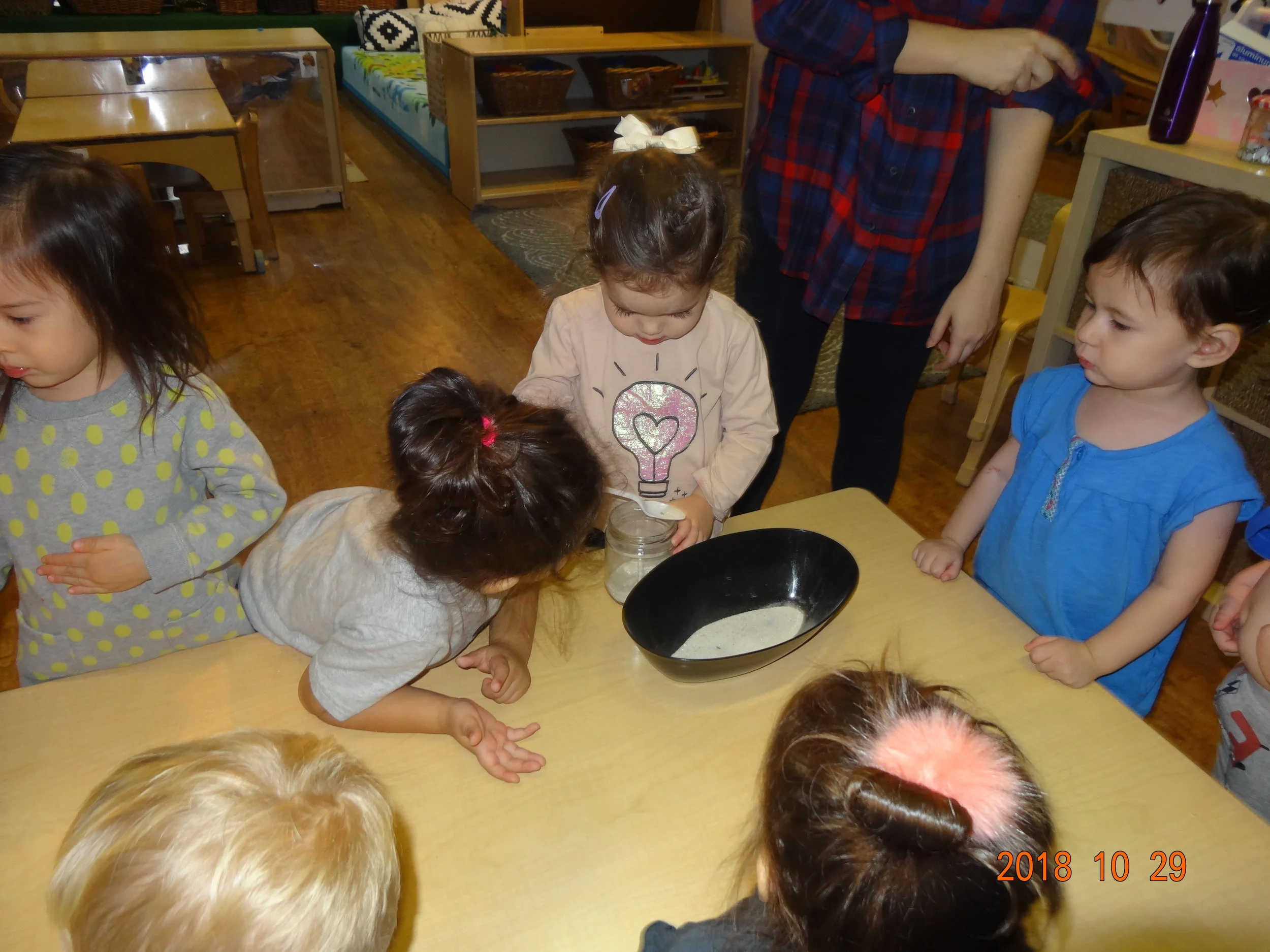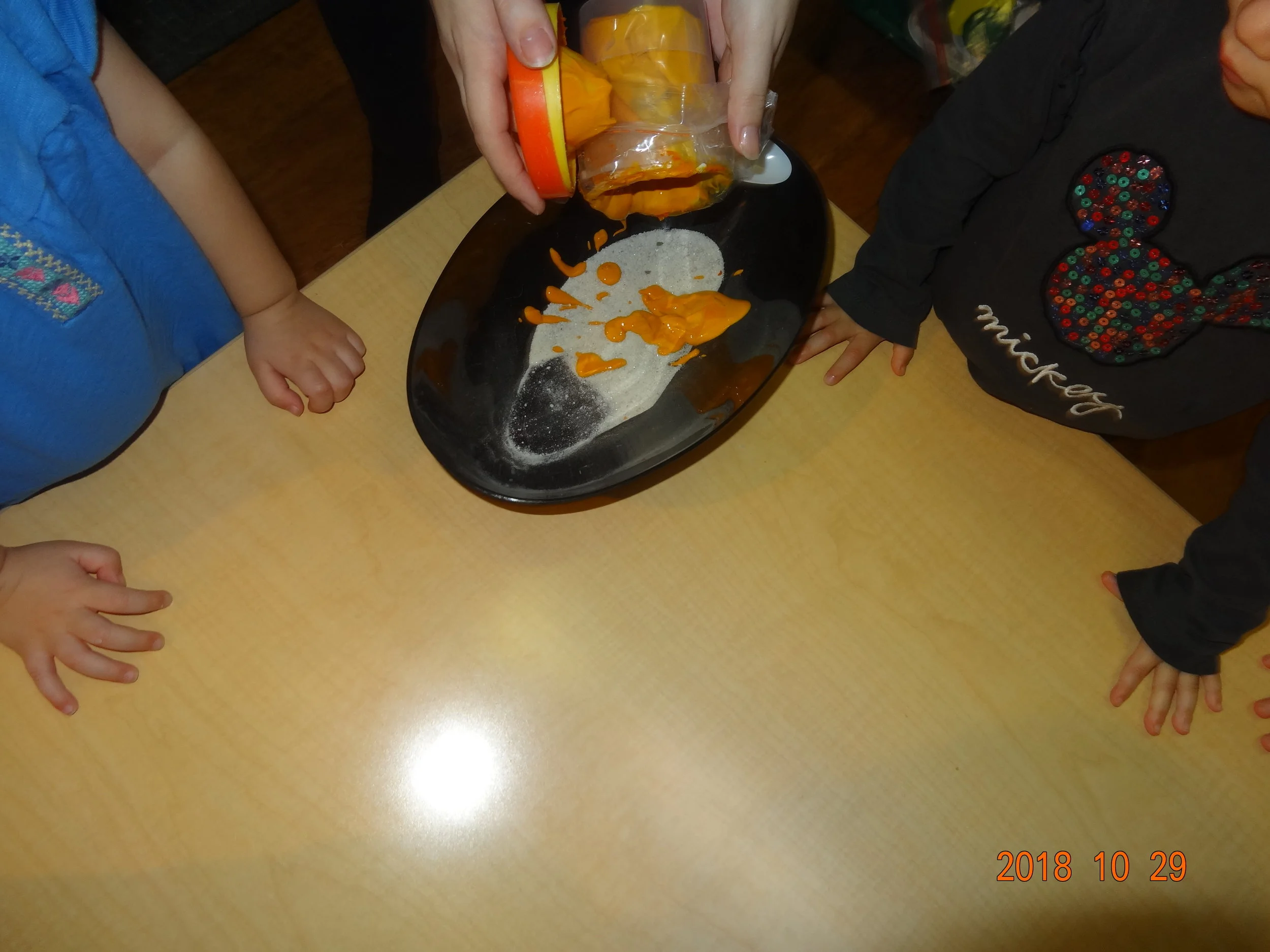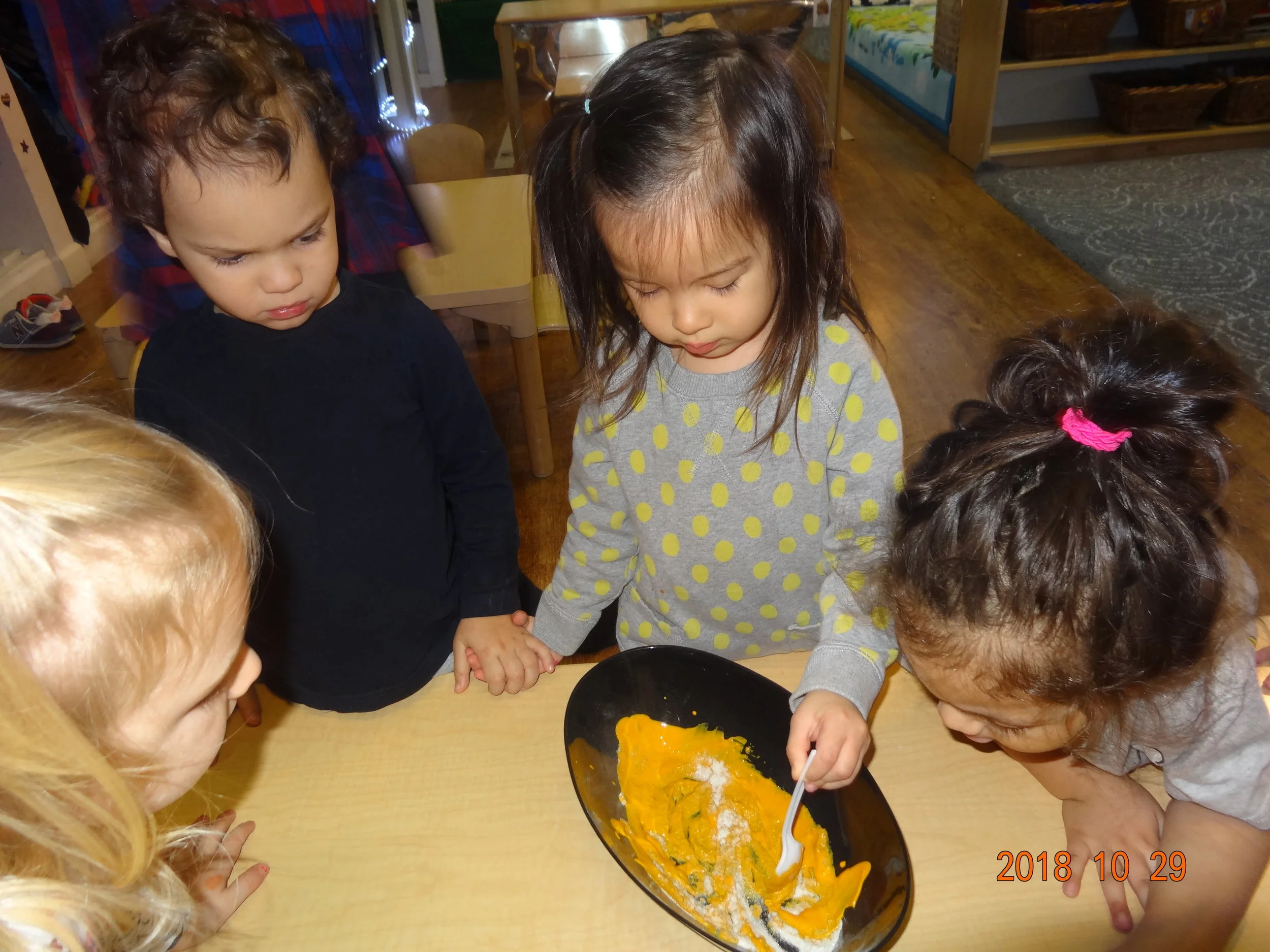Last week, as detailed in the blog, we set out sand painting as a provocation one morning. When it was available on the table for free exploration, the children were not that interested in engaging in the activity. A few of the students tried out painting with the mixture for a couple of minutes, but overall, they were not interested. Painting with sand tends to be fun as the product leaves textured results behind on whatever surface you paint on it with, but the students were not inspired. We decided that we would give the students another opportunity to explore sand-paint, but this time around we would start the process from the beginning all together.
For the second try with sand-paint, we all stood around the table, with no chairs. Each child had a chance to scoop sand into a big bowl. Once the sand was added in, Emily added in paint (yellow and green). Each child got the chance to stir the ingredients together, as the others sang a song to encourage them. After the paint was made, the children were ready to use it to paint on cardboard. Each child was eager to try it out, mixing up the paint, and spreading it on the cardboard.
The main difference between sand-painting last week and this week, was the collaborative approach. When the sand-paint was already made and set up, the children were not that interested in engaging with it. However, when they were able to be a part of setting up and out the materials to begin with, they all participated. By making and creating something to be used, the children felt a sense of ownership over the activity. They were excited to see the process through from start to finish. Although we will not always able to do so, we look forward to including the children in the creation processes for many of our art and sensory activities.










